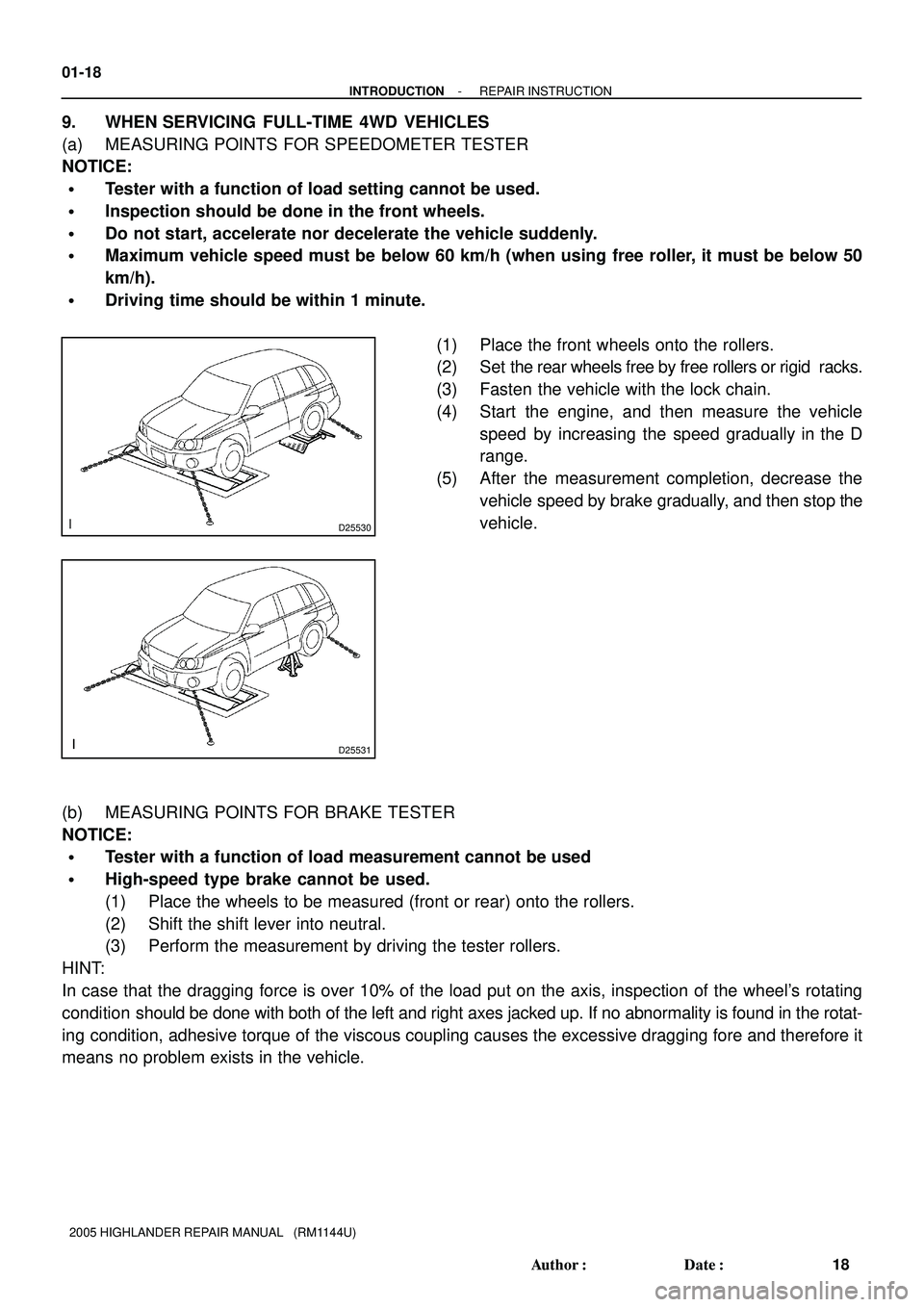Page 2142 of 2572

BODY DIMENSIONS
Three-dimensional
distanceCenter-to-center
straight-line
distance
Two-dimensional
distanceCenter-to-center
Horizontal distance
in forward / rearward
Vertical distance
in centerVertical distance
in lower surface
Imaginary Standard Line
Under Surface of
The Rocker Panel
Imaginary Standard Line
DI-1
GENERAL INFORMATION
1. BASIC DIMENSIONS
(a) There are two types of dimensions in the diagram.
(1) (Three-dimensional distance)
�Straight-line distance between the centers of two
measuring points.
(2) (Two-dimensional distance)
�Horizontal distance in forward / rearward between the
centers of two measuring points.
�The height from an imaginary standard line.
(b) In cases in which only one dimension is given, left and right
are symmetrical.
(c) The dimensions in the following drawing indicate actual dis-
tance. Therefore, please use the dimensions as a refer-
ence.
(d) The line that connects the places listed below is the imagi-
nary standard line when measuring the height. (The dimen-
sions are printed in the text.)
SYMBOLName
1The place that was lowered A mm from the under surface of
the rocker panel centered on the front jack up point.
2The place that was lowered B mm from the under surface of
the rocker panel centered between 1 and 3.
3The place that was lowered C mm from the under surface of
the rocker panel centered on the rear jack up point.
Page 2228 of 2572

D25530
D25531
01-18
- INTRODUCTIONREPAIR INSTRUCTION
18 Author�: Date�:
2005 HIGHLANDER REPAIR MANUAL (RM1144U)
9. WHEN SERVICING FULL-TIME 4WD VEHICLES
(a) MEASURING POINTS FOR SPEEDOMETER TESTER
NOTICE:
�Tester with a function of load setting cannot be used.
�Inspection should be done in the front wheels.
�Do not start, accelerate nor decelerate the vehicle suddenly.
�Maximum vehicle speed must be below 60 km/h (when using free roller, it must be below 50
km/h).
�Driving time should be within 1 minute.
(1) Place the front wheels onto the rollers.
(2) Set the rear wheels free by free rollers or rigid racks.
(3) Fasten the vehicle with the lock chain.
(4) Start the engine, and then measure the vehicle
speed by increasing the speed gradually in the D
range.
(5) After the measurement completion, decrease the
vehicle speed by brake gradually, and then stop the
vehicle.
(b) MEASURING POINTS FOR BRAKE TESTER
NOTICE:
�Tester with a function of load measurement cannot be used
�High-speed type brake cannot be used.
(1) Place the wheels to be measured (front or rear) onto the rollers.
(2) Shift the shift lever into neutral.
(3) Perform the measurement by driving the tester rollers.
HINT:
In case that the dragging force is over 10% of the load put on the axis, inspection of the wheel's rotating
condition should be done with both of the left and right axes jacked up. If no abnormality is found in the rotat-
ing condition, adhesive torque of the viscous coupling causes the excessive dragging fore and therefore it
means no problem exists in the vehicle.
Page 2229 of 2572

D25532
- INTRODUCTIONREPAIR INSTRUCTION
01-19
19 Author�: Date�:
2005 HIGHLANDER REPAIR MANUAL (RM1144U)
(c) MEASURING POINTS FOR ON-VEHICLE BALANCER
(1) Jack up all 4 wheels with 2 post lifts.
(2) Fasten the vehicle by setting 2 pick-up stands in the
bottom of suspension arm's tip of the front wheels
or rear wheels to be measured.
(3) Support the vehicle with rigid racks so that vehicle
will not lean in the vehicle's front/rear direction.
(4) Release the parking brake.
(5) Check that no dragging force exists by turning each
wheel by hand.
(6) Set the wheel balancers.
(7) Measurement should be done by using both of en-
gine drive and wheel balancer roller drive.
NOTICE:
�Start the engine, and then increase the vehicle speed
gradually in the D range.
�Do not accelerate nor decelerate suddenly.
�Deceleration should be done by brake gradually.
�Take special care that the vehicle does not move.
�Measurement should be done quickly.
10. FOR VEHICLES EQUIPPED WITH CATALYTIC CONVERTER
CAUTION:
If a large amount of unburned gasoline or gasoline vapors flow into the converter, it may cause ove-
heating and create a fire hazard. To prevent this, observe the following precautions.
(a) Use only unleaded gasoline.
(b) Avoid prolonged idling.
Avoid idling the engine for more than 20 minutes.
(c) Avoid a spark jump test.
(1) Perform a spark jump test only when absolutely necessary. Perform this test as rapidly as pos-
sible.
(2) While testing, never race the engine.
(d) Avoid a prolonged engine compression measurement.
Engine compression measurements must be performed as rapidly as possible.
(e) Do not run the engine when the fuel tank is nearly empty. This may cause the engine to misfire and
create an extra load on the converter.